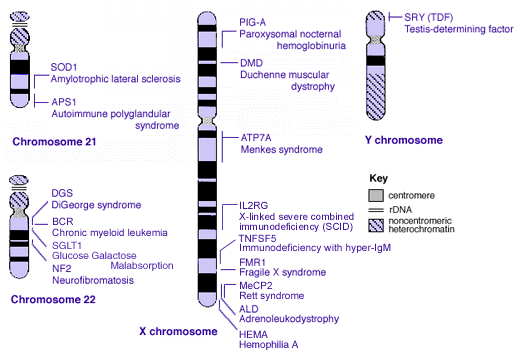|
|||||||||||||||||||||||||||||||||||||||||||||||||||||||||||||||||||||||||||||||||||||||||||||||||||||||||||||||||||||||||||||||||||||||||||||||||||||||||||||||||||||||||||||||||||||||||||||||||||||||||||||||||||||||||||||||||||||||||||||||||||||||||||||||||||||||||||||||||||||||||||||||||||||||||||||||||||||||||||||||||||||||||||||||||||||||||||||||||||||||||||||||||||||||||||||||||||||||||||||||||||||||||||||||||||||||||||||||||||||||||||||||||||||||||||||||||||||||||||||||||||||||||||||||||||||||
|
|
Quran and
Determination of Sex
by Dr. Ibrahim B. Syed
The Noble Qur'an
which was revealed to Prophet Muhammad(pbuh) about 1400 years ago mentions how
the sex of a human being is determined. The following two verses or Ayat of the
Qur'an are very clear on this matter.(A. Yusuf Ali translation)
"And of him He made
Two sexes, male and female."
Surah Qiyamat (the Resurrection), 75: 39 In the above
Ayah, " of him He made two sexes, male and female" means that of the human male
(he), He (Allah) Created both the
sexes male and female. Hence human male is responsible for the birth of a
male child or a female child. The human female is not responsible for the sex
determination of the child. However, in many Muslim countries the woman is
blamed for the birth of a female child as in these countries they welcome the
arrival of a male child.
"That He did create in
pairs,-male and female,
From a seed when lodged (in
its place); Surah Najm(the Star) 53:45-46 To understand
Sex determination we need to understand the Chromosomes, particularly the X and
Y chromosomes. The accepted
chromosome number for humans in 1935 was forty-eight. The year 1956 is
considered to mark the beginning of modern human Cytogenetics. Until this time
the number of chromosomes in the normal human cell was considered to be 48.
Due to improvements in techniques it was discovered that the correct number is
46 (Tjio and Levan, 1956) Reference:
Tjio JH, Levan A (1956) The chromosome number of man. Am J Obstet Gynecol
130:723-724 What is a
Chromosome? A chromosome is
composed of a very long molecule of DNA and associated proteins that carry
hereditary information. The centromere, which is at the center of the
chromosome, is a specialized structure that appears during cell division and
ensures the correct distribution of duplicated chromosomes to daughter cells.
Telomeres are the structures that seal the end of a chromosome. Telomeres play a
critical role in chromosome replication and maintenance by counteracting the
tendency of the chromosome to otherwise shorten with each round of replication. Chromosomes are
composed of protein and DNA, and they are distinct dense bodies found in the
nucleus of cells. Genetic information is contained in the DNA of chromosomes in
the form of linear sequences of bases (A, T, C, G). The DNA in an individual
chromosome is one, long molecule, which is highly coiled and condensed. The
total number of bases in all the chromosomes of a human cell is approximately
six billion and individual chromosomes range from 50 to 250 million bases. The
DNA sequence for a single trait is called a gene. Each chromosome contains a few
thousand genes, which range in size from a few thousand bases up to 2 million
bases. During most of
the cell cycle, interphase, the chromosomes are somewhat less condensed and are
not visible as individual objects under the light microscope. However during
cell division or mitosis, the chromosomes become highly condensed and are then
visible as dark distinct bodies within the nuclei of cells. The chromosomes are
most easily seen and identified at the metaphase stage of cell division. Sex
Chromosomes X and Y
Somatic cell
is any cell other than a sperm or egg cell. Somatic cells in humans and most
other animals are diploid. Diploid cells are cells containing two
sets of chromosomes. Each somatic cell in humans contains 46
chromosomes which can be distinguished from one another by their appearance
under a microscope. Chromosomes differ in size, position of the centromere, and
staining pattern. A pair of chromosomes that have the same size, centromere
position and staining pattern are called Homologous chromosomes (homologues).
The chromosomes of a homologous pair carry genes controlling the same inherited
traits. Each locus (the position of a gene along the length of a chromosome) is
in the same position on homologues. One exception to
homologous chromosomes for human somatic cells is the two distinct sex
chromosomes which are important in sex determination. All other chromosomes
are referred to as autosomes. Sex
chromosomes in humans are the X and Y chromosomes.
The special type
of cell division that produces haploid cells is called meiosis and
occurs only in the gonads (ovaries of the female and testes of the male).
Meiosis in humans produces sperm and egg cells which contain 23 chromosomes.
When fertilization occurs, the zygote contains 46 chromosomes and is diploid.
The process of meiosis and fertilization are unique to sexual reproduction and
all sexually reproducing organisms follow a basic pattern of alternation between
diploid and haploid conditions. Haploid cell is a cell that contains a
single chromosome set. The number of
chromosomes in human cells is 46 with 22 autosomal pairs (a total of 44) (one of
each type contributed by the mother and one of each type from the father) and 2
sex chromosomes - 2 X chromosomes for females (one from father and one from
mother) or an X and a Y chromosome for males (the X from the mother and the Y
from the father). Sex
chromosomes determine the sex of an organism and some other sex-linked
characteristics. In the process
of reproduction, special cells are produced in males and females. Males
produce sperm cells and females produce egg cells, or ova. The chromosomal
makeup of these cells is interesting. Each sex cell from each parent contains
only one member from each pair of chromosomes. Therefore, in ova or egg cells
there are 22 autosomes plus an X chromosome. There are two types of sperm cells,
each type carrying 22 autosomes plus a gender-determining chromosome, i.e., X or
Y. The banding of
chromosomes by using dyes was discovered in the late 1960's and before that
cytogeneticists depended on chromosome length and position of a constriction to
identify the individual chromosomes. The band width and the order of bands is
characteristic of a particular chromosome - a trained cytogeneticist can
identify each chromosome (1,2,3...22, X and Y) by observing its banding pattern
under the microscope.
Sperm and egg
cells are called gametes and are distinct from somatic cells with
respect to their chromosome number. Each human gamete contains a single set of
22 autosomes and a sex chromosome (either an X or a Y). Gametes in humans and
other organisms are haploid. Haploid
number: The number of
chromosomes in a haploid cell (designated N). The haploid number of humans is
23. Sexual intercourse allows a haploid sperm cell from the father to reach and
fuse with an egg cell from the mother in a process called fertilization.
Fertilization is the fusion of a sperm cell and an egg cell to form a
zygote. Zygote
is a fertilized egg cell and it contains the two haploid sets of chromosomes
from the gametes and is diploid.
Half of the
genes carried on the chromosomes are contributed by the mother (set of
chromosomes from the egg cell) and half by the father (set of chromosomes from
the sperm cell). During
development from a zygote to a sexually mature adult, the zygote's genetic
information is passed with precision to all somatic cells by the process of
mitosis. Sex organs, which form during development, then produce new gametes
which can initiate a new cycle. A human's sex is
predetermined in the sperm gamete (spermatozoa). The egg gamete mother cell is
said to be homogametic, because all its cell possess the XX sex chromosomes.
Sperm gametes are deemed heterogametic because around half of them contain the X
chromosome and others possess the Y chromosome to compliment the first X
chromosome. In light of this, there are two possibilities that can occur during
fertilization between male and female gametes, XX and XY. Since sperm are the
variable factor (i.e. which sperm fertilizes the egg) they are responsible for
determining sex. Chromosomes X
and Y Chromosomes X
and Y do not truly make up a homologous pair. They act similarly in their roles,
but they are not homologous (the same). The X chromosome in humans is much
longer than the Y chromosome and also contains many more genes. These genes are
said to be sex linked, due to the fact they are present in one of the sex
chromosomes. During fertilization, when the opposing homologous chromosomes come
together, the smaller Y chromosome offers no dominance against the 'extra'
X-chromosomes as indicated below. Sex Linked
Characteristics These sex linked
genes on the X chromosome display a number of characteristics. The following are
some examples of phenotypes as a result of these genes: Red-Green colour
blindness and Hemophilia - (a condition which prevents the clotting of the
blood) Humans usually
have 46 chromosomes per diploid cell consisting of 22 sets of autosomes
and a set of sex chromosomes - either XX or XY. In the
usual course of events, individuals with the karyotype 46, XX are
female and individuals with 46, XY, are male.
Chromosome
Constitution Name of Syndrome Sex of Individual
Frequency in Population 46,
XX Normal
Female 0.511 * 46,
XY Normal
Male 0.489* 45,
XO Turner's Syndrome
Female 1 in 5,000 47,
XXY Klinefelter's Syndrome
Male 1 in 700
____________________________________________________________________________________________ * Female (46,
XX) and Male (46, XY) frequencies taken from US Census projection of July 1,
1966 with no correction for chromosome constitution. It is clear that
the presence of a Y chromosome is necessary for male sexual
characteristics to develop.
EGG
SPERM
EGG SPERM
|
||||||||||||||||||||||||||||||||||||||||||||||||||||||||||||||||||||||||||||||||||||||||||||||||||||||||||||||||||||||||||||||||||||||||||||||||||||||||||||||||||||||||||||||||||||||||||||||||||||||||||||||||||||||||||||||||||||||||||||||||||||||||||||||||||||||||||||||||||||||||||||||||||||||||||||||||||||||||||||||||||||||||||||||||||||||||||||||||||||||||||||||||||||||||||||||||||||||||||||||||||||||||||||||||||||||||||||||||||||||||||||||||||||||||||||||||||||||||||||||||||||||||||||||||||||||










